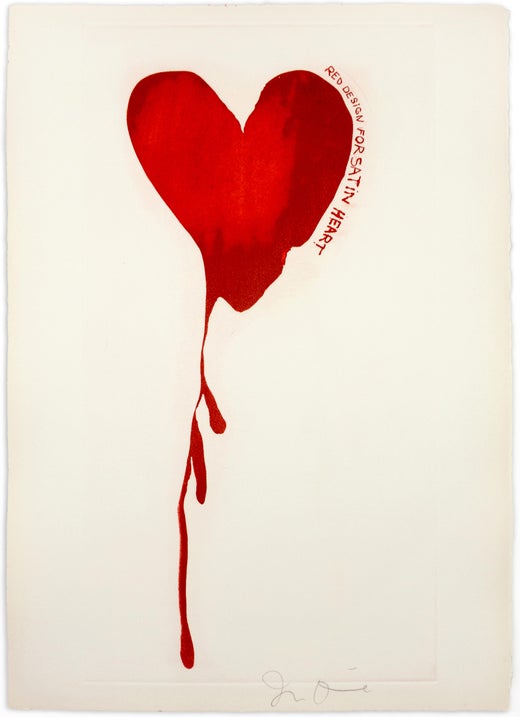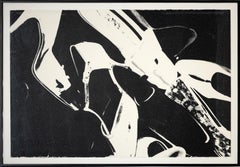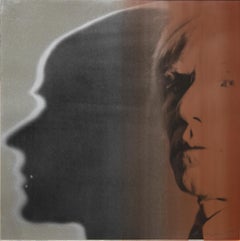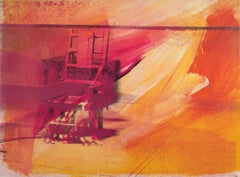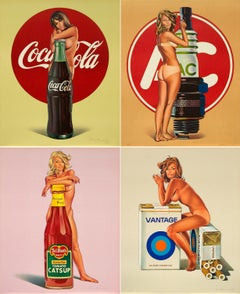Jim DineRobe Against Desert Sky1979
1979
About the Item
- Creator:Jim Dine (1935, American)
- Creation Year:1979
- Dimensions:Height: 41.75 in (106.05 cm)Width: 29.5 in (74.93 cm)
- More Editions & Sizes:Edition 2/17Price: $5,000
- Medium:
- Movement & Style:
- Period:
- Condition:
- Gallery Location:Palm Desert, CA
- Reference Number:Seller: 450911stDibs: LU9313569642
Jim Dine
The Ohio-born artist Jim Dine brought his ever-shifting, multidisciplinary vision to New York in 1958, a time of transition in the American art world. Abstract Expressionism, which had dominated the scene for years, was on the wane, and a group of young artists, including Dine, Allan Kaprow, Jasper Johns and Robert Rauschenberg, was eager to replace it with a movement that flipped the traditional rules of art-making on their head.
Beyond dissolving the boundaries between mediums and genres, attaching found objects and detritus to their canvases, these revolutionaries began staging performative “happenings” in public spaces, redefining the very definition of a work of art. As Pop art took form, Dine used objects with personal significance, like his paintbrushes, to transform his paintings into two-dimensional sculptures. He was included in the Norton Simon Museum’s 1962 “New Painting of Objects,” often considered the first true Pop art exhibition in America, but he remained a chameleon, constantly changing his style, material and technique.
More than his contemporaries, Dine has forged new paths in drawing, scrawling words and names across the canvas to create graphic, abstract landscapes. He is obsessed by certain motifs — such as hearts and his own bathrobe — which recur in various forms throughout his oeuvre. He has occasionally worked in classical genres, such as portraiture, as exemplified by the 1980 aquatint Nancy Outside in July. He has also co-opted the bold, graphic vocabulary of advertising and commercials, as in the sleek 2010 composition Gay Laughter at the Wake.
Find Jim Dine prints and other art on 1stDibs.
You May Also Like
1970s Pop Art Prints and Multiples
Screen, Lithograph
1970s Pop Art Figurative Prints
Screen, Lithograph
1970s Pop Art Figurative Prints
Lithograph, Screen
1970s Pop Art Figurative Prints
Lithograph, Paper, Screen
1970s Pop Art Portrait Prints
Lithograph, Screen
1980s Pop Art Abstract Prints
Screen, Lithograph, Offset
1960s Pop Art Abstract Prints
Screen, Pencil, Lithograph, Mixed Media
1980s Pop Art Abstract Prints
Pencil, Lithograph, Screen
1990s Pop Art Figurative Prints
Lithograph, Screen
1980s Pop Art Animal Prints
Screen, Lithograph
More From This Seller
View All1980s Pop Art Still-life Prints
Screen
Late 20th Century Pop Art Portrait Prints
Screen
Late 20th Century Pop Art Figurative Prints
Screen
1970s Pop Art Figurative Prints
Lithograph
2010s Contemporary Figurative Prints
Screen
Early 2000s Contemporary Figurative Prints
Screen
Recently Viewed
View AllRead More
Penelope Gottlieb’s Comic-Style Painting Is a Requiem for a Vanished Flower
This piece may look like Pop art fun, but embedded within is a message of a planet on the brink.
10 Reasons Art Collectors Are Obsessed with Andy Warhol
More than three decades after his death, the prolific Pop artist and cultural icon's body of work continues to captivate. Here's a primer of some of his most notable motifs and mediums.
